Crew 311 GreenHab Report 19-02-2025
GreenHab Officer: MOUMOUNI Meddi
Environmental control (fan & heater): Yes
Average temperatures (last 24h): 79 F
Maximum temperature (last 24h): 93 F
Minimum temperature (last 24h): 71.2 F
Hours of supplemental light: 5hrs
Daily water usage for crops: 5 gallons
Daily water usage for research and/or other purposes: 75mL
Water in Blue Tank (200 gallon capacity): 164 gallon
Time(s) of watering for crops: 10 am / 4:30pm
Changes to crops: Extracted some soil from a sunflower (I think) pot where nothing was growing for my microgreens experiment
Narrative: Was able to start the microgreens experiment in the afternoon, the day was a little bit cloudy
Harvest: 7g mint
Support/supplies needed:
Sol Summary – February 19th
Crew 311 Sol Summary Report 19-02-2025
Sol: 3
Summary Title: A break to freshly restart the day!
Author’s name: Erin Pougheon, Crew Commander
Mission Status: Nominal
Sol Activity Summary: This morning, three crew members went on EVA to install 4 atmospheric instruments: LOAC, which analyze the atmosphere and aerosols, MegaAres and the Field Mill, which analyze the electric field and a weather station. The EVA went very well, and they even finished earlier than planned. While the EVA was going on, Crew Scientist started the HUMANISE experiment by teleoperating a rover.
After a delicious lunch prepared by Crew HSO and Crew Scientist, the whole crew took a well-deserved break. The afternoon was quite calm but productive: GreenHab Officer finished planting the micropouss and took photos for our outreach activities!
As every day, the end of the afternoon is fully dedicated to filling in questionnaires and preparing the communication window!
Look Ahead Plan: Tomorrow will be dedicated to continuing the installation of the experiments we started, such as testing that all the data from the Orbital Architecture experiment is well collected. We also want to start working on new experiments, such as for example the building of a rover from scratch with a 3D printer.
Anomalies in work: None
Weather: Cloudy, Temperature 30 F / 50 F
Crew Physical Status: Nominal
EVA: None
Reports to be filed: Sol Summary, EVA Report #03, Operations Report, GreenHab Report, Journalist Report, Crew Photos.
Support Requested: None
Journalist Report – March 11th
SOL 23: The rover has landed
04:17 PM: This morning was a bit different from the others. We struggled to create the map of Kissing Camel Ridge yesterday, despite the 800 photos that Somaya had taken. The schedule was rearranged at the last minute because Robin and Quentin were unable to study the 2D map last night. Everyone was also very tired, so this morning, the crew woke up a bit later than usual, and Robin and Quentin studied the map during the 45 minutes preceding their EVA. They then left with Célyan, who was in charge of observing their performance, and Somaya, who took more drone photos of the area. EVAs with four crew members are rare, and the HAB was quite calm in the morning. Meddi and Erin took advantage of this to plan the organization of our bags to lose as little time as possible on the last day of the mission when we will leave.
At the end of their exit, the EVA crew members returned to the base to take out the rover from SUPAEROMOON, which was ready for this moment. The ISAE-SUPAERO club could not provide us with a robotic arm for the rover, so we won’t be able to test it fully, but this mechanism leaves a perfectly adapted space for… Didier, our mascot!
After taking refuge in the station and taking a well-deserved break, Quentin went to the observatory. I then heard from my room a message coming from the mission support walkie-talkie. It informs us that one of our rovers, which we use to move during EVAs, is no longer operational for the rest of the mission. This rover was really useful as its battery allowed us to reach distant regions of the station, like the Sea of Shells area. Fortunately, this week, we will stay in spaces near the base, and the remaining three rovers will be more than enough. Suddenly, Quentin also called the HAB from a walkie-talkie and informed us that the tunnels are being damaged again. Meddi and Robin went to rescue our movement spaces to prevent their condition from deteriorating, which would cause another emergency EVA rather unwelcome at this busy time.
EVA Report – March 14th
EVA #: 16
Author: Robin GORIUS (Crew engineer, EVA Leader)
Purpose of EVA: retrieve the atmospheric instruments from Marble Rituals
Start time: 9:01 AM
End time: 9:46 AM
Narrative: The crew went to marble ritual with curiosity and perseverance. They parked the rovers at 9:10 AM then walked to the instrument site. On site they retrieved the last data set and started disconnecting all the instruments from the batteries at 9:13 AM. They did two back and forth between the instrument site and the rovers and completed the task at 9:33. They drove back to the station and placed every instrument in the RAM. They entered the hab airlock at 9:41 AM. With that the final EVA of crew 311 was completed!
Destination: Marble Rituals
Coordinates (use UTM WSG 84): 518250 E, 4250750 N
EVA Participants: Erin Pougheon (Crew commander), Isolde Louzier-Ricalens (Crew Journalist), Robin GORIUS ( and EVA Leader).
Road(s) and routes per MDRS Map: Cow Dung Road 0110
Mode of travel: Driving to Marble Rituals, walking to the experiments site and coming back to the rovers. The crew will drive back and forth between the station and the instrument site to bring everything home.
Vehicles used: Curiosity and Perseverance
Curiosity: Start 100%, 300.7h/ End 92%, 300.8h
Perseverance: Start 100%, 310.4h/ End 92%, 310.5h
Mission Summary- March 14th
Crew 311, for ISAE-SUPAERO, spent 4 weeks in the MDRS station, from 16-02-2025 to 15-
03-2025.
The simulation started on Sol 1, when the crew closed the door of the station! Ready and
motivated to perform experiments they prepared for a year; the seven students were very
excited to start the mission.
The first week of the mission started with a lot of work! We concentrated our energy on
building the atmospheric instruments: MegaAres, LOAC, the Field Mill and Cosmic Watch.
Once deployed, on Sol 3 during an EVA, they were able to collect atmospheric data such as
dust particles or electric fields.
We also had a lot of experiments to install, especially Orbital Architecture. For this
experiment, we had to install anchors that allow the researcher to know where every crew
member is in the station. This experiment also collected data such as heart rate or stress
level.
During the first week, everyone familiarized themselves with their own tasks, specific to
their roles. Especially, our GreenHab Officer started to take good care of the GreenHab and
planted the micropouss to study them!
As well as the installation of our lights for the Lattal experiment, we installed our 3D printer,
which was very useful all through the mission!
The first week also started our daily routine, starting at the wake up with the retrieval of a
large set of physiological data: temperature, oximetry, sleep diary, impedance meter, … After
Core Data retrieval, each day started with a sport session organized by our Health and
Safety Officer, which we enjoyed every day very much!
Outreach is a very important part of our mission. We place special importance on this
subject, as sharing our passion and commitment to science and the space field, especially to
younger generations, seems essential in the mission we conduct. For this reason, we had a
lot of different projects with French high schools’ students, such as the micropouss growing
monitoring, or the organization of sport sessions. WE started those activities on the first week
of the mission, but they continued all along the mission, with also some video recordings to
answer students’ sessions.
Week 2 in the station started with the beginning of our main experiment requiring EVAs: the
photogrammetry experiment! The aim is to go to a place with a drone, take pictures with it,
and use them with dedicated software to process them and obtain a 3D map of the area.
After that, a team is preparing the finding of checkpoints with the 2D map and another one
with the 3D map, and we compare their performances. This experiment requires 3 EVAs per
week, which we achieve on the week 2, 3 and 4 of the mission!
The stratigraphy experiment is in collaboration with geologies and requires EVAs during the
mission. Our Crew Astronomer, between 2 solar observations, and our GreenHab Officer
specialized in this subject and helped the geologies by taking pictures and drawing some
areas around the station. It is also during week 2 that we decided to write abstracts to write
papers about different topics of the mission: organization, Core Data, outreach, … We hope
to present them at the IAC!
The beautiful solar observations of our Crew Astronomer led to an even more beautiful video
of the Sun, which incorporated perfectly in the mid-mission video we created. We worked
hard on it, with the aim to represent as best as we could what our mission looks like!
It is also in week 2 that our Crew Engineer and Crew Journalist spent a lot of time
troubleshooting AMAIA, our AI assistant. Some features worked well, but all along the
mission we didn’t manage to make it work perfectly…
But some other experiments worked very well at the beginning of the mission, such as the
HUMANISE experiment in which we teleoperated a rover, located in the Netherland, in direct
from the station!
Every day, we continued to fill out our daily questionnaires, for various experiments. We also
recorded every day, personally, an audio for the EVOLSAN laboratory, which studies our
voices and how to detect stress for example. For this experiment, we also wore a micro for a
whole afternoon, once a week!
At mid-mission, every crew member had an interview with the Crew Commander to recap the
first two weeks of the mission, and to take a fresh start for the second part of the mission!
Week 3 started with the second session of photogrammetry, at Sea of Shells, the further of
the station we’ve ever been! It also marked the beginning of the brainstorming session for the
Orbital Architecture experiment. This experiment aims to study the architecture of space
stations, and how it impacts astronauts’ performances. For this experiment, we wore
biosensors, performed cognitive tests regularly, and had sessions in which we talked about
how to improve the station architecture, regarding our experience of it! We had three
sessions, talking about different modules one by one.
In week three, we also started to create a lot of documentation on our experiments, and
especially our Core Data, the physiological and environmental data we retrieve every day. It
comes with a lot of data handling, for all our experiments.
After the beautiful observations of the Sun during the first two weeks, Crew Astronomer
continued to work on his own astronomy project. He aimed to analyze the trajectories of solar
flares, to link them to coronal mass ejections. He succeeded at the end of the mission to
finish all the work he wanted to do!
Crew Engineer and Crew Scientist started to build the SUPAEROMOON rover. In
in collaboration with another student club of our engineering school, ISAE-SUPAERO, we 3D-
printed all the parts of the rover and tried it on the Martian ground!
At the end of the third week of the mission, a hole in the tunnel system led to an
emergency EVA, in which crew members successfully fixed the hole and saved the station!
We ended the week by eating the micropouss that our GreenHab Officer grew. Radish or
wasabi, we were very happy to taste them, and it was really surprising! It also highlights an
important part of our crew : cohesion! We are a very close group, having a lot of fun together
even if we work a lot. We had time to enjoy life in the station, play games, cook together, and
even had an escape game to save our mascot on the last Sunday of the mission!
The last week of the mission started with the last session of photogrammetry at Kissing
Camel Ridge W. Other crew members defined the checkpoints and flew the drone. It was
interesting to end the experiment this way! Experiments runs continued to happen, such as
Orbital Architecture’s cognitive tests in all modules and the VR teleoperation of the rover for
HUMANISE.
Scientific outreach was still a huge part of our actions, with videos filming and answering
questions.
As the end of the mission approached, it was time to start and uninstall everything, and
especially the atmospheric instruments, during our last EVA on Sol 26. This last Sol was
mostly packing and cleaning everything. The crew remained very happy with the mission in the
station, from all points of view: human, scientific, … Now that the mission is finished, it
doesn’t mean the work is finished! Crew still must ship back equipment, do some feedback
for the researchers, do some communication, etc. It is a new beginning!
Operations Report – March 14th
SOL: 26
Name of person filing report: Robin GORIUS
Non-nominal systems: Robotic observatory, toilet alarm
Notes on non-nominal systems: Maintenance of the observatory planned for June
ROVERS
Spirit rover : not used
Opportunity rover: not used
Curiosity rover: used
Hours: 300.8h
Beginning charge: 100%
Ending charge: 92%
Currently charging: no
Perseverance rover: used
Hours: 310.5h
Beginning charge: 100%
Ending charge: 92%
Currently charging: no
General notes on rovers: Worked as expected
Summary of Hab operations: Sport, experiments
Water Use (please use both methods to estimate water usage)
Time of measurements (collect data for the same time window): 7:25 pm
1) Per formula (see notes): 12gl
2) Smart Home Dashboard (see notes):14.25gl
Water (static tank, remaining gallons): 205.25gl
Static tank pipe heater (on or off): on
Static tank heater (on or off) : on
Toilet tank emptied (no or yes): yes
Summary of internet: used from 7 pm to 9 pm for reports
Summary of suits and radios:
Suits :
1 -> 100%, not used
2 -> 100%, not used
3 -> 100% , not used
4 -> 100%, not used
6 -> 100%, not used
7 -> 100%, used
8 -> 100%, used
9 -> 100%, not used
10 -> 100%, used
Suits : Nothing to report
Radios : Nothing to report.
Summary of GreenHab operations: Plants were watered
WATER USE: 12 gallons
Heater (On or Off): Off
Supplemental light (hours of operation): 5 to 10 pm
Harvest (name, weight in grams): scallion 30g
Summary of ScienceDome operations: experiments
Dual split (Heat or AC, On or Off): Off
Summary of RAM operations: (Tools used, work done): None
Summary of any observatory issues: None
Summary of health and safety issues: None
Questions, concerns and requests to Mission Support: Thank you for your help and support during the mission!
Sol Summary – March 14th
Crew 311 Sol Summary Report 14-03-2025
Sol: 26
Summary Title:
Author’s name: Erin Pougheon, Crew Commander
Mission Status: Nominal
Sol Activity Summary: This morning, we started our last day by the last EVA to uninstall the atmospheric instruments. Once back in the station, we packed them safely and continued to pack the rest of our materials and personal belongings.
After having our last lunch in simulation, we continued packing everything. Meanwhile, the last sessions of the Orbital Architecture experiments continued to run.
Everyone feels weird to break the simulation today, and to have to pack everything and clean means we’re leaving …
Look Ahead Plan: No look ahead plan, except we plan to clean the station and leave tomorrow morning.
Anomalies in work: None
Weather: Cloudy, Temperature 35 F / 50 F
Crew Physical Status: Nominal
EVA: None
Reports to be filed: Sol Summary, EVA Report #16, Operations Report, GreenHab Report, Journalist Report, Crew Photos, End of mission Research Report, Mission Summary.
Support Requested: None
Operations Report – March 13th
SOL: 25
Name of person filing report: Robin GORIUS
Non-nominal systems: Robotic observatory, toilet alarm
Notes on non-nominal systems: Maintenance of the observatory planned for June
ROVERS
Spirit rover : not used
Opportunity rover: not used
Curiosity rover: not used
Perseverance rover: not used
General notes on rovers: Worked as expected
Summary of Hab operations: Sport, experiments
Water Use (please use both methods to estimate water usage)
Time of measurements (collect data for the same time window): 6:24 pm
1) Per formula (see notes): 10.29gl
2) Smart Home Dashboard (see notes):13.09gl
Water (static tank, remaining gallons): 184.65gl
Static tank pipe heater (on or off): on
Static tank heater (on or off) : on
Toilet tank emptied (no or yes): no
Summary of internet: used from 7 pm to 9 pm for reports
Summary of suits and radios:
Suits :
1 -> 100%, not used
2 -> 100%, not used
3 -> 100% , not used
4 -> 100%, not used
6 -> 100%, not used
7 -> 100%, not used
8 -> 100%, not used
9 -> 100%, not used
10 -> 100%, not used
Suits : None
Radios : Nothing to report.
Summary of GreenHab operations: Plants were watered
WATER USE: 8 gallons
Heater (On or Off): Off
Supplemental light (hours of operation): 5 to 10 pm
Harvest (name, weight in grams):
Summary of ScienceDome operations: experiments
Dual split (Heat or AC, On or Off): Off
Summary of RAM operations: (Tools used, work done): None
Summary of any observatory issues: None
Summary of health and safety issues: None
Questions, concerns and requests to Mission Support: Trash bags have been left in the RAM airlock.
GreenHab Report – March 13th
Crew 311 GreenHab Report 13-03-2025
GreenHab Officer: MOUMOUNI Meddi
Environmental control (fan & heater): Yes
Average temperatures (last 24h): 78 F
Maximum temperature (last 24h): 92 F
Minimum temperature (last 24h): 71 F
Hours of supplemental light: 5 hours
Daily water usage for crops: 8 Gallons
Daily water usage for research and/or other purposes: None
Water in Blue Tank (200 gallon capacity): 74 Gallons
Time(s) of watering for crops: 9:30 am & 5pm
Changes to crops: None
Narrative: Nothing in particular to note other than the coldness of this Sol.
Harvest: None
Support/supplies needed: None
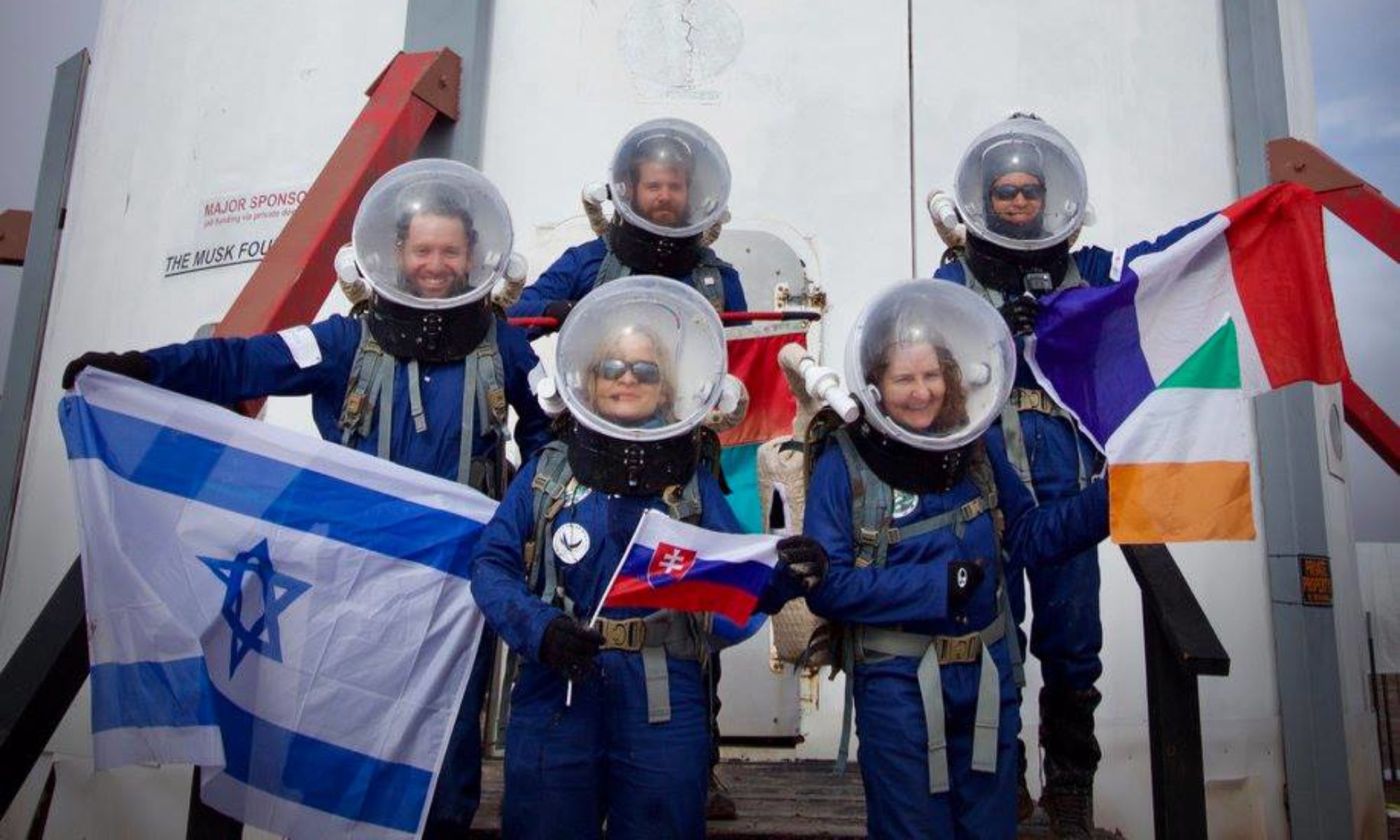
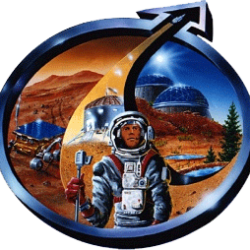
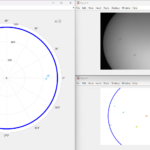
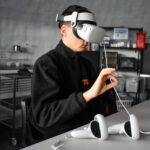
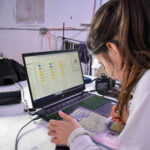
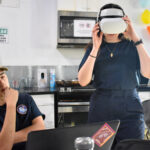
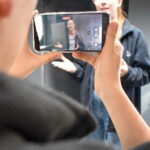
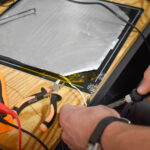
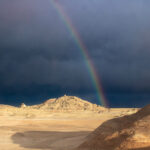
You must be logged in to post a comment.